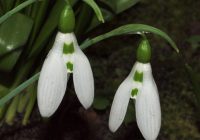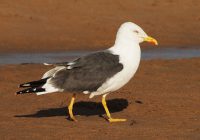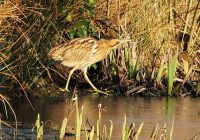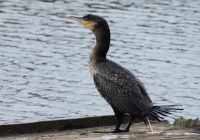Dr Phil Smith’s Wildlife Notes
February 2012
The severity of the drought afflicting most of lowland England finally resulted in some TV weather presenters belatedly admitting that “we might need some rain”. This from people who would evidently prefer to live in the Atacama Desert was progress indeed. Here, I noted significant rainfall on only four days in the month. Dr Derek Clarke, who monitors the sand-dune water-table at Ainsdale, told me that the levels were the lowest at this time of year for at least 10 years and probably the second lowest recorded in 40 years. All of this will have major implications for the economy, as well as for wildlife.
Apart from a cold snap early on, it was incredibly mild for most of February. The result was the early appearance of flowers, such as the Garden Grape-hyacinth (Muscari armeniacum) on 13th at Kenilworth Road dunes, where Common Whitlow-grass (Erophila verna) was also showing well. Snowdrops are of course a familiar sight at this season but Kenilworth dunes produced one specimen which was clearly different from the norm. It keyed out to the Large Snowdrop (Galanthus elwesii) a garden-escape rarely recorded before in northern England and new to the Sefton Coast. It was accompanied by other escapees, including the attractive Early Crocus (Crocus tommasinianus), Spring Crocus (C. vernus) and the hybrid between them. By the end of the month, the first large garden Daffodils were flowering in various places on the coast, this being several weeks earlier than usual. Following the trend, I saw a queen Buff-tailed Bumble-bee on 23rd while a Brimstone butterfly was reported at Martin Mere the following day. Rachael Parks had frog-spawn in her garden pond on 28th.
A visit to Cabin Hill National Nature Reserve on 21st produced Early Crocus and Sowbread (Cyclamen hederifolium). These are new species for the reserve list now totalling an impressive 366 vascular plants. The 50 Herdwick Sheep and five Shetland cattle that winter on the reserve have done a great job grazing down coarse vegetation, thereby helping to maintain this diversity. I was particularly interested to see the impact of the cattle on stands of Grey Willow. They have browsed off the young twigs, smashed tracks through the dense scrub patches and even stripped bark off some of the branches. This small hardy breed could have a role in scrub control elsewhere on the coast.
Despite the unseasonal weather, plenty of wintering birds remained throughout the month, though summer-plumaged Lesser Black-backed Gulls at Ainsdale beach on 13th hinted at the changing season, while Avocets were already back at Martin Mere by 20th. On 7th, two flocks of Pink-footed Geese totalling about 6700 were on fields off North Moss Lane where I have never seen geese before. The following day, reports of a Bittern found me heading off to Mere Sands Wood Nature Reserve. Sure enough, the bird was entertaining several visitors in front of the Rufford Hide. After a while, someone said “What about this one over here”. Amazingly, there was another Bittern on the edge of the reeds, both being visible at the same time. Others were reported elsewhere in the Northwest, part of an influx from the ice-bound European mainland. On my way home, I stopped off at Southport Marine Lake where two immature Shags were on the breakwater. A more usual occurrence was the closely related Cormorant at Sands Lake, Ainsdale, on 23rd. Just as I took its photograph, this bird lightened its load to assist takeoff.
The last three days of the month were spent supervising the deepening of Natterjack Toad breeding sites at Hightown and Lifeboat Road, Formby. We also managed to excavate a new scrape in the Ravenmeols frontal dunes where the habitat is ideal for Natterjacks except that there has never previously been any water for breeding. Now all we need is some rain!




